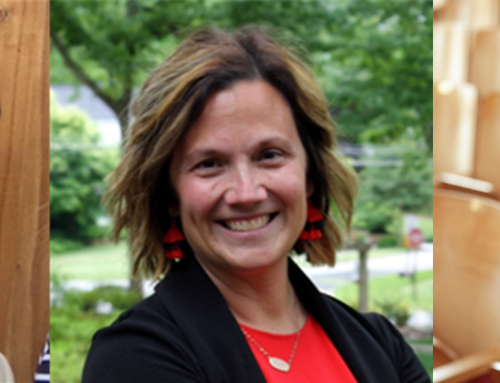Recently I had the opportunity to facilitate a session at the annual retreat of a local, very generous, family foundation. Their stated goal is to engage all the generations of the family in responsibly growing their giving in the future.
I researched their family history and read 2 books by the founder. What an incredible story! This type of resource should be required reading for all families, especially for aspiring grantees! It was fun to find our similarities and their family had more things in common with mine than one might imagine. We each shared our family, our faith, and our philanthropy origins.
I shared my very favorite foundation giving story from my 30+ years in development work which included the funniest gift I have ever received-a tractor trailer load of toilet paper. Alas, that is a story for another day.
We talked about national trends in giving and reviewed the most recent GIVING USA statistics. Foundations (including family foundations) provided about 17% of the total $450 billion given away in 2019. And they have their choice of giving to some 1.8 million US nonprofits, 5700 in Atlanta alone. How are foundations and recipients supposed to find each other?
I had taken the time to survey a number of local foundations to see what if any trends might be surfacing as the pandemic wanes. I asked each foundation representative 3 questions:
- How has the pandemic affected their giving?
- Now that things are opening up, will they go back to their original giving patterns?
- How do they want to be communicated with going forward?
Results were not too surprising. Most foundations had pivoted quickly to provide emergency grants to their current grantees. Capital campaigns took a pause and annual support dollars were made available. Organizations providing food and shelter and healthcare were offered grants even if that was beyond the foundations’ regular giving patterns. Most foundations will go back to their original giving priorities now, but most are adding some opportunities for equity, racial justice, and education as it relates to learning deficits because of schools not being in session. Most offices are back in person and will begin in-person site visits but will still keep some activities virtual.
This particular foundation has a new and improved website and clearly articulates their 4 buckets of giving. They give to annual and capital projects, but not endowment. They are open to considering new projects given the interests of family members, the needs of the community in light of the pandemic and other recent social issues.
The family members aged 12 to 82 all participated in discussion. Each shared what organization(s) they would support and why, if they could only make one grant. It was interesting to see the breadth of interest and willingness to hear new ideas from all ages.
We then moved into what they want their family foundation reputation to be. With a new optimized website, they will become even more well known. They do not necessarily want to be anonymous donors. They want organizations to be able to easily find them and understand their priorities. They want to be known as an organization that listens and is responsive, that shares their values with like-minded organizations, and uses resources wisely to make the world a better place.
Before the group met, I had also informally surveyed Our Fundraising Search clients. We asked what nonprofits wish foundations knew. I shared the results which included:
- Nonprofits want a relationship with a foundation, more than just 1 site visit.
- Nonprofits want foundations to consider giving to operating.
- Foundation timelines are generally too long.
- Nonprofits want foundations to consider joint applications to solicit multiple foundations at one time.
- More foundations should consider multi-year support.
- They should consider funding whole projects.
- Foundations should encourage a broader perspective, and even creativity in reporting: accept custom grant reports, videos, drawings, simple stories of impact.
- Streamlining paperwork would benefit both foundations and nonprofits.
- Foundations should more actively encourage, and sometimes broker, collaboration among nonprofits.
And then, because I had the opportunity, I spent the last few minutes sharing what I personally wish foundations would fund. Since all nonprofits need to raise money, I would wish for support of any activity that would leverage increased giving to deserving nonprofits. This could include funding:
- Development staff.
- Philanthropy education.
- Board training.
- Staff training.
- Ongoing professional development.
- Volunteer fundraising training.
- Fundraising resources.
- Families, college students, children philanthropy training.
I believe what this foundation was doing in their retreat is so powerful and important to their future and that of our community. Every foundation should be exercising this same approach to expand their reach as they share their mission and goals. I for one, cannot wait to see how this foundation’s future unfolds.
Our Fundraising Search was pleased to partner with the Patterson Family Foundation of Atlanta in this important work.






Leave A Comment